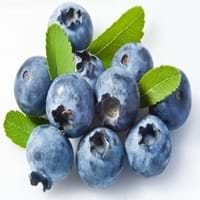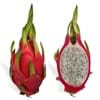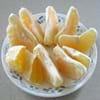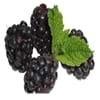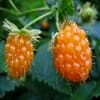Health Benefits
Cancer prevention, Heart care, Increases metabolic rate, Strengthening of bones, Treatment of skin Diseases
Cancer prevention, Cures gastro-intestinal troubles, Improves night vision, Improves stomach health, Prevents diabetes, Prevents high blood pressure, Reduces blood circulation problems
General Benefits
Anti oxidant properties, Boosts immune system, Digestive aid, Eye care, Improves blood circulation, Sore throat treatment
Fights against infections, Helps in weight loss, Prevents blood clotting in vessels, Treatment of urinary tract infections
Skin Benefits
Anti-aging benefits, Reduces wrinkles, Skin rejuvenation, Treatment of skin diseases
Anti-aging benefits, Nourishes skin, Protects against skin damage
Hair Benefits
Protects hair
Prevents hair loss
Allergy Symptoms
Abdominal pains, Coughing, Diarrhea, Itching, Runny nose, Sneezing, Swelling of mouth, tongue or lips, Wheezing
Not Available
Side Effects
Allergic reaction
Decrease in blood sugar levels, Diarrhoea, Dizziness, Headache, Internal bleeding, Stomach pain
Best Time to Eat
Best if taken as a breakfast (or empty stomach), As a snack in the late afternoon, Don't consume at night and before bed, Eat the fresh ones, avoid mixing with any other foods, don't eat after meal., Morning time (before lunch)
As a snack in the late afternoon, Don't consume at night and before bed, Eat the fresh ones, avoid mixing with any other foods, don't eat after meal., Morning time (before lunch)
Vitamin A (Retinol)
Not Available
Vitamin B5 (Pantothenic Acid)
Not Available
Vitamin B6 (Pyridoxin)
Not Available
Vitamin B9 (Folic acid)
Not Available
Vitamin C (Ascorbic Acid)
Vitamin E (Tocopherole)
Not Available
Vitamin K (Phyllochinone)
Not Available
Lutein+Zeaxanthin
Not Available
Calories in Fresh Fruit with Peel
Calories in Fresh Fruit without Peel
Not Available
Not Available
Calories in Frozen Form
Not Available
Not Available
Calories in Dried Form
Not Available
Not Available
Calories in Canned Form
Not Available
Not Available
Varieties
Dwarf Huckleberry, Cascade Huckleberry, Mountain huckleberry and Blackwinter Huckleberry
Dwarf bilberry, Piper, bog blueberry, Northern bilberry, Mountain bilberry and Oval-leaved bilberry
Color
Blue, Purple, Purplish black
Dark purple
Inside Color
Purple
Light Green
Origin
North America
Unknown
Grows on
Not Available
Trees
Soil Type
Loamy, Sandy, Well-drained
Moist, Well-aerated
Climatic Conditions
Humid, Warm
Cold
Facts about
- "I'm your huckleberry" is a way of saying that one is just the right person for a given job.
- The phrase "a huckleberry over my persimmon" was used to mean "a bit beyond my abilities".
- Bilberries are used in manufacturing of alcoholic drinks.
- They are used to improve aromas of sorbets.
- The green extract of it's leaves is used in textile industry as natural dye.
Top Producer
United States of America
Japan
Other Countries
Canada
Denmark, Finland, Iceland, Sweden
Top Importer
Canada
United States of America
Botanical Name
Gaylussacia brachycera
Vaccinium myrtillus
Synonym
Not Available
blaeberry, whinberry, European blueberry, whortleberry
Subkingdom
Tracheobionta
Tracheobionta
Division
Magnoliophyta
Magnoliophyta
Class
Magnoliopsida
Magnoliopsida
Subclass
Asteridae
Dillenhidae
Family
Ericaceae
Ericaceae
Genus
Gaylussacia
Vaccinium
Species
G. brachycera
Vaccinium myrtillus
Generic Group
Heath
Heath
Difference Between Huckleberry and Bilberry
We might think that Huckleberry and Bilberry are similar with respect to nutritional value and health benefits. But the nutrient content of both fruits is different. Huckleberry and Bilberry Facts such as their taste, shape, color, and size are also distinct. The difference between Huckleberry and Bilberry is explained here.
The amount of calories in 100 gm of fresh Huckleberry and Bilberry with peel is 37.00 kcal and 44.00 kcal and the amount of calories without peel is Not Available and Not Available respectively. Thus, Huckleberry and Bilberry belong to Low Calorie Fruits and Low Calorie Fruits category.These fruits might or might not differ with respect to their scientific classification. The order of Huckleberry and Bilberry is Ericales and Ericales respectively. Huckleberry belongs to Ericaceae family and Bilberry belongs to Ericaceae family. Huckleberry belongs to Gaylussacia genus of G. brachycera species and Bilberry belongs to Vaccinium genus of Vaccinium myrtillus species. Beings plants, both fruits belong to Plantae Kingdom.

